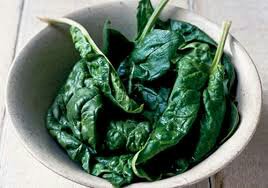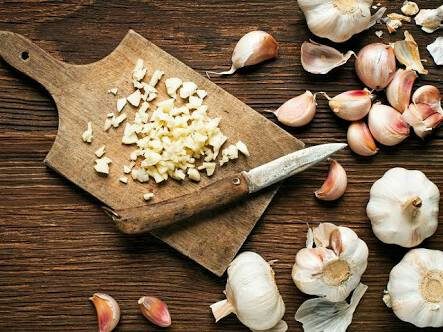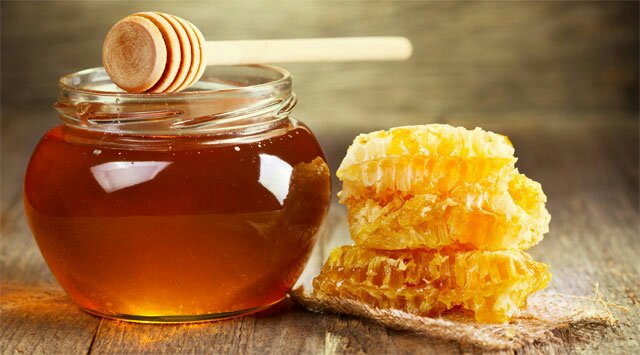This is your very first post. Click the Edit link to modify or delete it, or start a new post. If you like, use this post to tell readers why you started this blog and what you plan to do with it.

This is your very first post. Click the Edit link to modify or delete it, or start a new post. If you like, use this post to tell readers why you started this blog and what you plan to do with it.

Immune system’s function is to protect the body against disease causing microorganisms (virus, bacteria, fungi and protozoa). In a cold season, the immunity is weakened by virus (rhinovirus, influenza, para influenza and corona-virus) resulting to one catching a cold.
The following are foods that will boost your immunity this cold season.
1.Citrus fruits

Citrus fruits contain vitamin C that boosts our immunity by increasing the production of white blood cells. Citrus fruits examples are tangerine, oranges, lime, kiwi and lemons.
2. Spinach

Spinach contain antioxidants, vitamin C and beta carotene, all which boosts our immunity.
3. Chicken soup.

There are amino acids released when boiling chicken. They make the chicken soup have anti inflammatory effects. Asthmatic patients or people with a cold ought to take the soup to ease inflammation on the upper respiratory tract.
4. Ginger.
Ginger is a spice that can be added to foods or fluids to improve taste. It is also an anti inflammatory and

antiseptic. Ginger’s anti inflammatory effects help lower inflammation on the respiratory tract and clear the throat. Ginger boosts immunity by preventing disease causing microorganisms from entering the body system.
Ginger contain antihistamine effects that control cold brought about by allergens.
5. Garlic.
Garlic is a spice added to food to add flavor. It also boosts immunity through its sulfur bonding component,allicin. Allicin is a convert of alliin when crushed or chewed.

garlic boosts the functionality of the white blood cells in fighting the cold causing viruses.
6. Plain yogurt

Probiotics in plain yogurt acts as an anti-inflammation, therefore, reducing the severity and duration of a cold.
Zinc, magnesium and selenium in plain yogurt boosts a person’s immunity.
7. Pomegranate.

Pomegranate has anti-inflammatory effects and it contains vitamin C which reduce the effects and possibilities of catching a cold.
8. Turmeric.
Curcumin found in turmeric rhizomatous boosts immunity.

Turmeric increases white blood cells in the body that fight the virus that cause a cold.
9. Natural honey.

Natural honey contains probiotics from flowers. The probiotics have anti-inflammatory effects that prevents a cold from becoming severe and prevents one from catching a cold in general.

Health practitioners advise mothers to exclusively breastfeed their babies during their first 6 months of life. This means a mother has to frequently feed to have plenty of breast milk. Mothers are encouraged to take balanced diets and plenty of fluids.
Losing weight during the first six months after giving birth is a problem to many mothers. The fat is mostly concentrated around the waist line. Dieting is not an option for these lactating mother’s and exercising is tricky because they have less or no “me time”.
SHADING BABY FAT
All said, a mother’s main focus at this stage should be her child.
Find here some fitness tools to help in the weight loss journey.
Rheumatoid arthritis is the inflammation of joints. The chronic condition mostly affects fingures, toes, knees and ankle joints. If untreated eyes, skin, heart, blood vessels, salivary glads, kidneys and lungs will be damaged.
Its occurrence is because of the immune system attacking the body tissues. The lining of joints is damaged and the affected area has a painful swell, becomes red and it feels warm. This is inflammation. Small joints are affected in mild arthritis and big joints in severe rheumatoid arthritis.
Here are some signs that can tell you are suffering from rheumatoid arthritis:
Rheumatoid Arthritis risk factors:
Treatment:
Diabetes better known as diabetes mellitus is condition in which the body is not able to produce insulin or utilize the insulin produced. Insulin is produced in the pancreas’ beta cells of islet of Langerhans.
There are two major types of diabetes mellitus, DM type 1 and type 2. DM type 1 is insulin dependent and it mostly begins at childhood. Pancreas cannot produce insulin or it produces less insulin. The affected people have to inject insulin through their skin into the adipose tissues. In DM type 2 the body’s cells does not utilize stored glucose. As a result blood sugar levels go up. Type 2 diabetes may be genetics or caused by obesity and the kind of food people consume.
Diabetes and nutrition is better explained in DM type 2. Obesity is a risk factor. Energy storage is in excess for an obese person as compared to a person with a normal BMI. The excess energy is converted into glucose resulting to a high blood sugar because the cells might not be able to utilize the excess glucose. Such a person should work towards changing their lifestyle. Carbohydrates, fats and proteins, in this case, should be consumed in moderation. High fiber, legumes, low fat milk and whole grains are the best carbohydrates for diabetic patients. They take long to get digested regulating blood sugar unlike other carbohydrates that are digested faster leading to a quick rise in blood sugar levels. Empty carbohydrates such as sweets, biscuits and sodas should be avoided at all cost because they only contain refined sugars which contributed to higher levels of sugars in the blood.The patients are advised to take unsaturated fats. Fat should constitute only 35% of their meals. If possible, the patients should avoid using fat to prepare every meal. An example is boiling cabbages and kales instead of buttering them. Proteins should contain low to no fat, for example, lean meat. The diabetic patients are advised to take protein 2 to 3 times a week and should constitute 15% of the meal. Here is a guide of the best food for diabetic people to take.
The overweight and obese patients are supposed to exercise to burn the excess fat. The exercises run for 30 minutes 3 to 4 times a week. You will find Here guides to exercising at home or the gym.
Working out is not an activity done by many. A number of people view it as a tedious, time wasting activity. Dieting is an alternative but may not be the answer to a fit body and good health.
Why is fitness important? Our bodies need to be tuned to function properly. Some chronic diseases, to be precise, are caused by unfitness. Hypertension which leads to stroke and kidney failure can be controlled by working out. You lower or relieve yourself from stress when you work out. Ulcers and hypertension caused by stress can be cured through exercising. Your brain and the entire body’s functionality improves through the same. Excess fat is burnt out. The fat that form clots in arteries and veins causing high blood pressure and stroke. The fat that leads to diabetes type 2. Heart attack occurs mostly due to excess fat in the body that partially or completely form clots in the arteries that carry blood to and from the heart.
You do not need to be a fitness freak, you do not have to spend more hours exercising and exercising is not always boring. When starting out try some easy exercises such as jogging and some few sit-ups. Turn on the music or form a workout group to avoid been bored during workouts. Start out with a 10 minutes workout and progress as your body adapts.
These exercises and fitness aerobics icons by Graphixmania will help you through your fitness routine in the gym or at home.
FOOD SPOILAGE
Creatures such as mice, rats, insects and microorganisms (bacteria, virus, yeast and moulds) cause food spoilage. Enzymes, also, cause food spoilage.
The metabolism of bacteria mostly take place in foods that have organic nitrogen. Examples of these foods include protein foods (Milk, meat, eggs, beans and peas are some of the examples).
Moisture has to be present for the biological mechanism to take place. In cases of frozen, dry, sugary or salty food, metabolism will not take place. Sugar and salt have higher concentration than the bacterial cytoplasm. This may lead to osmosis on the bacterial cytoplasm leading to the bacteria becoming dehydrated.
*freezing, adding salt and sugar and drying are forms of preserving food. The freezing and drying methods are, however, reversible once moisture is available for the bacteria. The reason behind this is the spores of some bacteria remain dormant under conditions of dehydration.
Bacteria do survive under a wide range of temperature. They are divided into three groups depending on their optimum temperature:
• Psychrophilic bacteria: they cause damage to refrigerated food because they survive and grow at a temperature of below 20° C.
• Mesophilic bacteria: they grow at a temperature of 37° C. Affects food such as milk and meat.
• Thermophilic bacteria: they grow in temperature up to 60°C. They cause little spoilage to food.
A temperature below the range of a group will slow down the rate of metabolism of a bacteria but will not destroy it.
A temperature above the range of a group will kill/destroy the bacteria. An example, the vegetative bacteria are killed are killed by temperature above 100° C.
Some bacteria are either:
• Aerobic in that they need oxygen to metabolise.
• Anaerobic in that they do not need oxygen to metabolize.
Enzymes control the metabolic activities of bacteria and they function at a certain pH and food poisoning need a pH of 7.
FOOD POISONING
This includes the presence of poisonous chemicals or bacteria.
Poisonous chemicals include additives in food, weed killers, pesticides and heavy metals such as mercury and lead.
These foods contain natural toxins and can be dangerous if consumed in large amounts:
1. Onions
They contain anaemia producing ingredient which if taken in large amounts sometimes cause ill effects.
2. Potato
Potatoes which have turned green contain solanine which is dangerous if taken in large amounts.
3. Rhubarb
It has oxalic acid throughout the plant. If stems are eaten they have no effect but its leaves are dangerous because they have higher concentrations of the acid.
4. Cassava
It contains concentrations of cyanides and it can be poisonous when eaten raw. It can still be poisonous when processed if it contains II ppm.
5. Cabbage and cauliflower
They contain goitre producing compounds.
Moulds (mycotoxins) and fungi contaminate some foods.
A fungal disease in in rye, Ergot, produce a powerful toxic chemical in grains. Ergotism develops when the toxic is taken frequently.
A group of toxins produced by mould, Aflatoxins, cause illness in animals fed on imported food stuffs.
• Not all bacteria are bad. Bacteria in yoghurt and cheese are useful to the body.
• Bacterial infections can be prevented by good food hygiene.
SALMONELLAE
• It causes food poisoning when ingested in large numbers by a healthy adult and in much lesser number when ingested by infants, children and the sick.
• Symptoms which include nausea and vomiting, abdominal pain, diarrhoea, headaches, faintness and chills appear 12 to 36 hours of eating and may last for 2 to 3 days.
• Main sources are human and animal faeces, duck eggs, poultry and fish.
• Cows and pigs, mainly, carry salmonellae in their intestines and there is cross contamination during slaughter and in the kitchen.
• Cold cooked meats, low temperature cooked food and mayonnaise spread salmonellae when eaten. Also in this list is water and milk contaminated by sewage and frozen chicken.
• Salmonellae causes typhoid and it can be destroyed by heating food.
STAPHYLOCOCCI
• Staphylococcus aureus is the most common
• Symptoms which include salivation, nausea and vomiting, abdominal cramp, diarrhoea, prostration and sweating take half an hour to 3 hours to be manifested
after been eaten.
• Sources are the human throat, nose, mouth and nasal passage, human skin that has open wounds and abrasions, boils, clothing and dust.
• Contamination is caused through cold meat, meat sources, gravies, fish and fish products and dairy products.
• Staphylococcus is heat destroyed. The toxins produced are heat resistant and require more heat to destroy. Also, food should be handled properly and wounds be covered.
I am going to be discussing infant and young child feeding and my focus will be on children aged 0 to 12 months.
Child nutrition is important for a proper growth. Undernutrition leads to stunted growth, mortality and eventually morbidity.
There are two phases of breastfeeding involved:
EXCLUSIVE BREASTFEEDING
An infant should breastfeed within the first 30 minutes to 1 hour of birth to prevent infections and child morbidity. Exclusive breastfeeding should be carried out for the first six months without introducing complementary food. This will minimize cases of food allergy. It will also minimize cases such as asthma and eczema.
HIV infected mothers are also recommended to breastfeed exclusively for the first six months as long as they are on antiretroviral medication. The medication reduces the risk of transmission from mother to child. Mixed feeding before six months can lead to diarrhoea or the child being infected with HIV.
Exclusive breastfeeding benefits both mother and child in such ways:
COMPLEMENTARY FEEDING / WEANING
Complementary food is introduced as a mother continues breastfeeding. It is started at the six months of a child’s age.
At six months, the energy and nutrient needs have already increased hence the need to introduce complementary foods that carter for the extra needed energy and nutrients.
A couple of factors must be considered at this stage:
At this stage, poor feeding can lead to malnutrition so the mother should make sure the child gets the required nutrients and the right quantity of food daily.
A mother can also introduce fruits such as oranges and observe the child’s reaction to them.
Kenya Ministry of Health recommends the babies to be fed 2 times at this stage. Feed 2 to 3 spoons at each meal.
Feed 3 times a day and introduce a snack. Give ¾ of a 250 ml cup in each meal.
WHAT NOT TO GIVE
It causes allergic reactions to the child.
The baby needs only a pinch of salt since the baby’s kidney is not mature enough to deal with large amounts of sodium.
They cause choking since the child’s gut is not well developed to handle such rough foods.
Milk from animals and soy milk contain proteins the child cannot digest. Minerals in these milk can damage the kidney.
It causes infant botulism. This is because of immature growth of the baby’s intestines.
Fruits are good sources of vitamins and minerals.
A pregnant woman needs high amounts of vitamins and minerals because of the extra nutrients need.
Not all fruits, however, are recommended for pregnant women.
These fruits are:
GREEN PAWPAW

The green pawpaw is semi ripe and it contains latex.
This latex causes uterine contraction hence there is miscarriage or early labour for those who are not due to give birth.
Ripe pawpaw has less latex compared to unripe pawpaw, hence, it has no effect on pregnancy. It is actually a good source of vitamin A and C.
PINEAPPLE

Bromelain, an enzyme in pineapples causes spasm of the uterus and softening of the cervix when taken in large amounts. The affected group is the first and second trimester pregnant women.
It leads to early labour and miscarriage .
Taking pineapple is not totally discouraged. Take about 2 to 3 servings of pineapple in a week.
Point to note:
Malnutrition is known as both under nutrition and over nutrition. We are going to discuss under nutrition today.
Malnutrition is a leading primary health care problem which leads to the persistence of health problems such as malaria, HIV/AIDs and tuberculosis.
Groups more vulnerable to malnutrition
Most of the groups affected by malnutrition are infants and children under the age of 59 months because of their rapid growth and development, pregnant and lactating women, malnourished pregnant women give birth to low birth weight babies risking the baby to malnutrition which may lead to stunted growth, mortality and morbidity and also mental disabilities. also affected are the elderly especially when they receive little or no care at all, those with eating disorders such as anorexia nervosa, the immuno-suppressed patients and the adolescents, especially women because they depend on nutrition to sustain the changes that occur in their bodies.
Causes of malnutrition
Prevention of malnutrition
Parts in Kenya mostly affected by malnutrition
Malnutrition leads to the persistence of infections such as malaria, HIV/AIDs and tuberculosis. It also increases the risk of HIV/AIDs transmission from mother to child.
In children, it leads to mental disability and there are cases of low blood sugar sugar due to malnutrition which can be detected by convulsion.
Protein – energy malnutrition
Most commonly known type of under nutrition is the protein energy malnutrition. This includes kwashiorkor and marasmus.
Kwashiorkor is caused by protein deficiency and the signs are edema, dry and peeling skin, de-pigmented skin and hair and belly swelling.
Marasmus is caused by protein and energy deficiency. Signs and symptoms include stunted growth and wasting of the muscles and tissues.
We all have friends, real and fake ones.
Today we discuss fake ones.
They say a friend in need is a friend indeed and so I get to meet a lady who is in need. She is not a friend yet but because I am in a position to help, we become friends. We get to stay friends for a few weeks then she goes mum, becomes closer to “friends” who did not offer help. Time goes by and after months the “friend” is in need again. Being a child of God I lend a helping hand. This time the “friendship” lasts but all along I know she is a FAKE.
Well, that is just one incident.
Here is another one:
I earn more than this lady, I save as much as I can and she squanders her money such that by mid-month she has little or no money left. She comes to me when she is broke and I support her to my ability. Earlier this month I ask her to take me shopping “it is a thing frienSds do” and she seems hesitant but eventually she agrees to it. My shopping runs smoothly until I go to purchase chicken. She give me a bad eye and insists that she is in a hurry and has to leave immediately.
Here are self-explanatory signs of fake friends that I have observed while making friends:
1. THEY ARE ALWAYS JEALOUS.
2. THEY AVOID YOU IN YOUR TIME OF NEED.
3. THEY NEVER WANT YOU TO SUCCEED.
4. THEY ARE NOT SUPPORTIVE.
5. THEY ALWAYS GOSSIP ABOUT YOU WITH OTHER PEOPLE.
6. THEY CONTACT YOU WHEN THEY NEED YOUR HELP OR WHEN IT SOOTS THEM.
7. THEY TALK DOWN ON YOU.
8. THEY COUNT LOSS WHEN THEY SPEND ON YOU.
9. THEY DELIGHT IN YOUR PAIN.